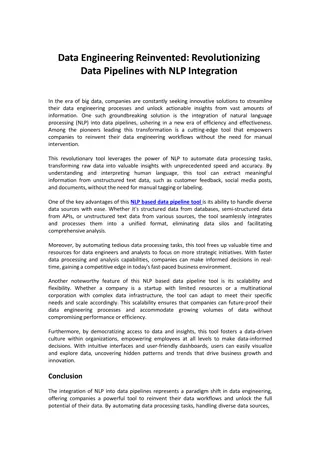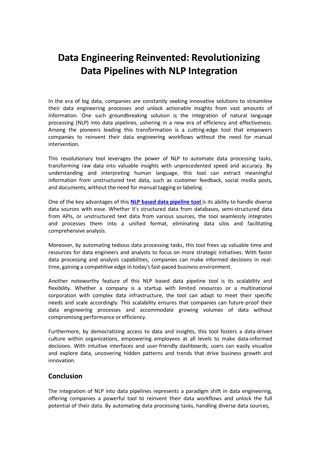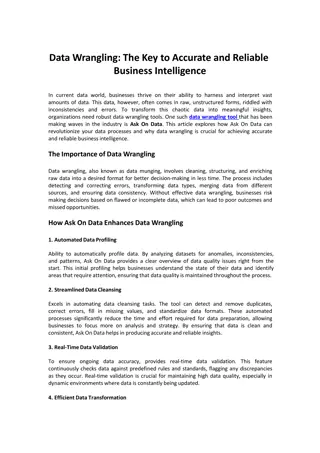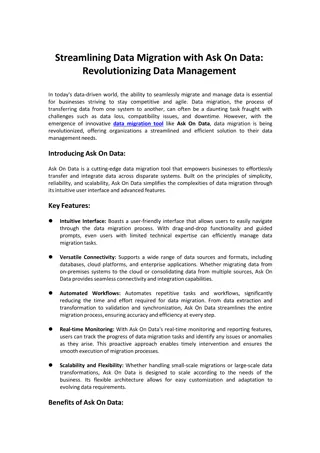
Effective Methods for Data Presentation and Visualization
Explore the different ways to present data including numerical representations, tables, and graphs. Understand when to use simple data, frequency distribution tables, and class interval distribution tables based on the size of your dataset. Master the characteristics of tables for clear and meaningful data presentation. Learn how to create class-interval frequency distribution tables for continuous quantitative data.
Download Presentation

Please find below an Image/Link to download the presentation.
The content on the website is provided AS IS for your information and personal use only. It may not be sold, licensed, or shared on other websites without obtaining consent from the author. If you encounter any issues during the download, it is possible that the publisher has removed the file from their server.
You are allowed to download the files provided on this website for personal or commercial use, subject to the condition that they are used lawfully. All files are the property of their respective owners.
The content on the website is provided AS IS for your information and personal use only. It may not be sold, licensed, or shared on other websites without obtaining consent from the author.
E N D
Presentation Transcript
Data presentation is either by; 1-Neumericals (numbers) 2-Tables; as a- Master table b- Simple frequency distribution table. c- Class interval frequency distribution table. 3-Graphs (Pictorial presentation of data) When we have the data composed of small sample size (n=20) it is easy to present them by numerical (numbers) "simple data", while if the data is more than 20 values or observations it is better to present them by tables.
Master table: It is that table that contains all the information collected by the researcher. It is difficult to be understood only by the researcher himself. It contains the information regarding all variables included in the study (spread sheet in the computer Excel). Simple frequency distribution table: It is the arrangement of data according to their magnitude and the frequency of recurrence or frequency of occurrence of each magnitude.
Table 1: The parity distribution of mothers attending ANC clinic in the PHC of Hay-Al-Salam for the year 2010.
The characteristics of tables: 1) Table should be simple, easy to be understood and self- explanatory. 2) Each table should have a number. 3) Each table should have a title written at the top of the table, this title should answer the following questions; what, where, when, and who. 4) Each table should have clear headings for the columns. 5) Each table should contain a total at the end of each column. 6) We should avoid the use of abbreviations and codes, and if we have to use them we should refer to them at the bottom of the table. 7) If we use any number from any reference or book; we should refer to it at the bottom of the table.
Class-interval frequency distribution table: The data of continuous quantitative type is presented here as intervals, the steps to present the data by C.I. table is as follows; 1) Count the number of observations. 2) Determine the smallest and the largest values. 3) Decide whether to present them in simple or in C.I. table. 4) It to present them in C.I. table we have to determine the number of C.I. according to Sturges' formula; K= 1+ 3.322 log10 n 5) Then determine the width of C.I.
6) Then determine the C.I. putting in mind it is better to start with a round number for the first C.I. without gaps and no overlapping. 7) Then present the frequency of observations according to this C.I. by tallying.
The additional characteristics of C.I. tables: 1) The number of C.I. (K) should not be less than 5 (in order not to lost the details) and not more than 20 (still the data is too wide). The preferable number of C.I. is 6 12, or using Sturges' formula. 2) Constant width of C.I. 3) No gaps in between C.I. 4) No overlapping between C.I. (so as the observation will be presented once only).
Example: Table 2: The haemoglobin level in g/dL for 70 pregnant women in Al-Yarmouk Teaching Hospital for the year 2010.
Table 3: The haemoglobin level in g/dL for 70 pregnant women in Al-Yarmouk Teaching Hospital for the year 2010.
Types of graphs: 1-Bar chart: It is a graphic representation used to present data of qualitative type. It is composed of number of bars separated from each other, the width of the bar is not of that importance but it is preferable to be of the same width (so as to give true impression), the length of the bar is of importance and it is drawn proportional to the frequency or percentage.
Table 4: The method of delivery of 600 babies born in Al-Yarmouk Teaching Hospital-Obstetrical ward for the year 2010.
2-Pie chart: qualitative type in shape of circle (pie). The size of the slice for each category is determined by the equation f / n X 360 degree. It is better to stat the circle from 12 O'clock or 3 O'clock. It is a graphic representation used to present data of
3- Histogram: It is a graphic representation used to present continuous quantitative data arranged in class-interval. It is composed of number of bars adherent to each other, the width of bars is very important which equal to the width of C.I., and the length of the bars is proportional to the frequency of C.I. or its percentage. So the area in histogram is very important and it represent 1 unit, 100%, equal to the probability.
4-Line graph (frequency polygon): It is a graphic representation used to present discrete quantitative data, also it can be derived from histogram (that is used to present continuous quantitative data arranged in class-interval) by taking the midpoint at the top of each bar, joining them by straight lines.
5-Spot map (spot chart, map chart): It is a graphic representation used to present data by map. 6-Scatter diagram: It is a graphic representation used to present data for correlation and regression to show the relationship between two quantitative variables. 7-Cumulative relative frequency percentage curve: It is a special type of line graph in which X axis is the variable and the Y axis id the c.r.f.%, it is used to calculate the value of the median precisely. The shape of the curve or line is of what is called sigmoid shape (sigmoid curve).
The characteristics of graphs: 1) Graphs should be simple, easy to be understood and self-explanatory. 2) Each graph should have a number. 3) Each graph should have a title written at the bottom of the graph, this title should answer the following questions; what, where, when, and who. 4) We should avoid the use of abbreviations and codes, and if we have to use them we should refer to them inside the graph.





















